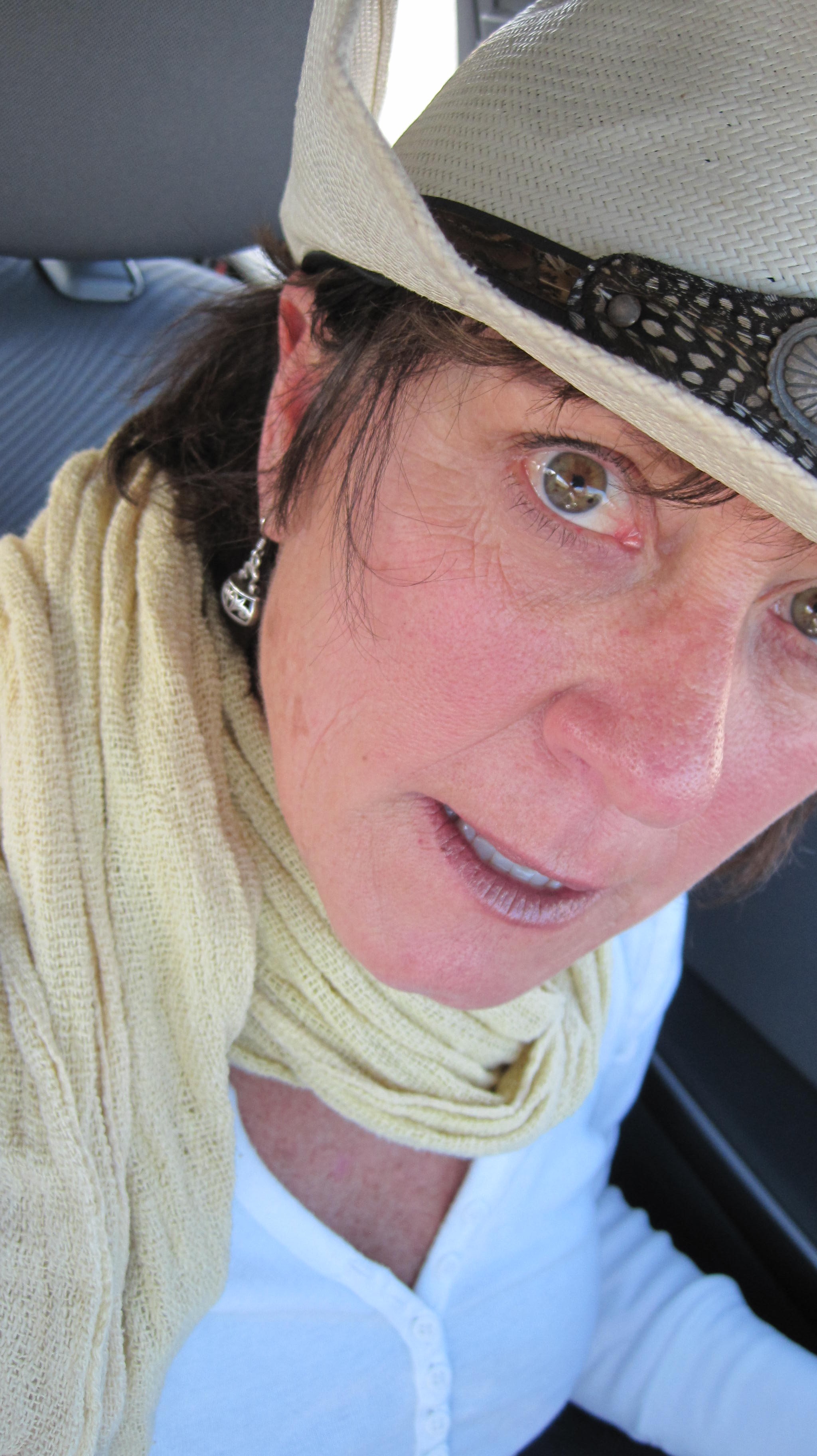 It is the 1960s, and I am five. I’m with my mother in our suburban bathroom, watching her apply makeup. I am mesmerized. And I am imprinted.
It is the 1960s, and I am five. I’m with my mother in our suburban bathroom, watching her apply makeup. I am mesmerized. And I am imprinted.
She holds her Maybelline oval cake of eyeliner under the faucet and coaxes a few drops of water, swirls it with a tiny brush, and swooshes it atop her lash line. She dabs at her nose with a powder puff. She darkens her brows with a pencil. And then the ritual de la resistance—the lipstick–always the final, dramatic act.
She swivels the lipstick up from its tube, leans into the mirror. She sweeps some frosted orange shade back and forth, rubs her lips together, dabs away some excess at the corners of her mouth with her pinkie. When she’s done, she pulls off a square of toilet paper to blot her lips, leans back, takes it all in, and smiles like a Cheshire cat.
I started wearing makeup when I was in high school. Some mascara, some blush, a smidge of eyeshadow usually in a garish blue that was in vogue at the time, but never lipstick. Lipstick was for moms or movie stars.
When I was in my late teens and early 20s at university, I embraced the flavor of feminism popular at the time. Scholars call it second wave feminism. Loosely defined, this wave saw the conventional ideas of femininity as incompatible with feminist beliefs. We had serious work to do, rights to fight for. We didn’t have time to apply eyeshadow. Fashion and glamour were considered superficial and diminishing. So, I spent my college years rejecting bras, pantyhose, curlers and girdles—the femininity food groups for my mother’s generation. Giving those up was not a sacrifice because they weren’t my jam anyway. They belonged in the province of old ladies. But I wanted to fit in with my feminist crowd and fight the power, so I didn’t shave my armpits. I cancelled my subscription to Glamour magazine. And I boycotted the cosmetics industrial complex. Sort of.
I still wanted to wear makeup. I liked it. The ritual, the transformation. Nothing too much but just enough to get the psychological boost that felt like a sugar high. I liked painting myself, playing with color and contour. But to remain true to my newly found personal politics and the unspoken rules governing that belief system, I wore my cosmetics on the down low and developed what I considered a morally righteous taxonomy: Mascara yes. Blush yes, but sparingly. Eyeshadow no. Lipstick absolutely not. Could I be a feminist and still wear lipstick? I didn’t think so.
Some might say that wearing lipstick is a superpower. Coloring the lips has been a practice for at least 5,000 years when Mesopotamian women crushed gemstones and mixed them with beeswax to adorn and color their lips. Reportedly, Cleopatra blended pulverized carmine beetles and ants to create a crimson hue for her lips.
Lip color didn’t morph into lipstick until around 1880 when it moved from being kept in tiny pots and applied with fingers to being something akin to a skinny Vienna sausage–a rigid, tubular mass that was congealed with grape seeds. The stick didn’t swivel; instead, it was pushed up out of its tube and locked into place with a mechanism similar to the one in a ball point pen.
In the early 20th century, the swivel was invented. During that century it wasn’t just the mechanism of lipstick that had evolved, but the ideas that lipstick represents and the people who wear it. It went from the province of streetwalkers to a symbol of femininity and sensuality to a tool of The Man to a sign of empowerment and resistance. Flappers in the 20s, leading ladies in the 40s, housewives in the 60s, male rock stars in the 80s.
About 30 years ago, lipstick feminism arrived in the States. Labelled by scholars as the third wave, lipstick feminism went wider with its ideas than the waves that preceded it. Lipstick feminism embraces traditional ideas of femininity and progressive ideas of equality. After the heavy lifting of the Woman’s Suffrage movement and the activism of the 60s, lipstick feminism turns on the notions that women can reject ideas of what a feminist should look like and yes, they can wear lipstick or whatever else they choose.
After my anti-lipstick 20s that was my feminist virtue signaling, I tiptoed into wearing it when I was in my late 30s. I favor a bold red; there is nothing like it to signal my badassery or to juice myself up when I am feeling low. I’ve two or three tubes of it rolling around the bottom of my backpack at any given time.
My mother died recently at age 89. In her older years she had stopped wearing makeup even though she insisted on keeping a compact in her purse. She wore lipstick from time to time but only for special occasions—Thanksgiving, a birthday party.
About a week before she died, I went to Miami to visit her and see her for the last time. Though we FaceTime, it had been a long spell since we saw one another in person. I missed her, and I knew she was near the end.
When I walked into her casita, where she was waiting for me, she was wearing lipstick. And so was I.

